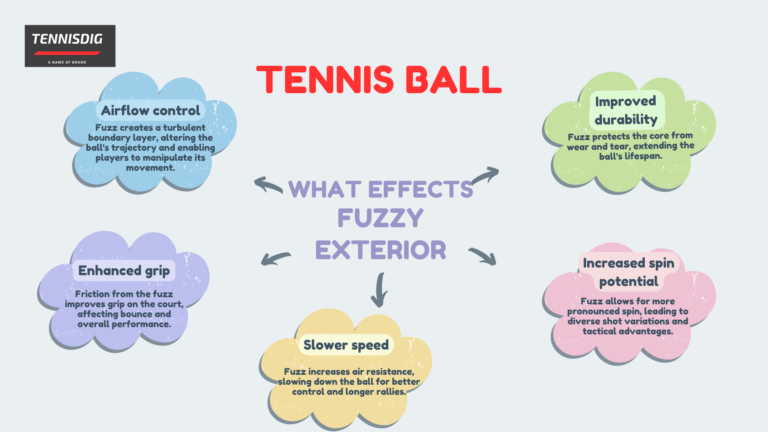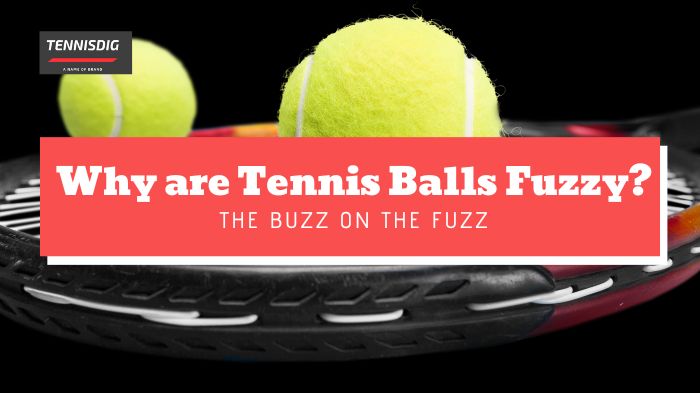The classic tennis ball is largely responsible for the distinctive character of tennis, a sport recognized for its speed and accuracy. The fuzzy exterior that distinguishes tennis balls is essential to the game. In this investigation, we’ll examine the components that makeup tennis balls, the causes of their fuzzy exterior, and how playing with them affects gameplay. We’ll also explore the background of fuzzy tennis balls, go over different fuzziness levels, and offer advice on how to tell when a tennis ball is beyond its prime.
Why Are Tennis Balls Fuzzy?
The fuzzy texture of tennis balls is essential to the game. The main purpose of the fuzzy outside is to improve the ball’s aerodynamics. The fuzzy texture of tennis balls is essential to the game. The main purpose of the fuzzy outside is to improve the ball’s playability and aerodynamics. When struck by a tennis racket, the fuzz produces greater drag, enabling players to apply more spin to the ball and produce a range of shots, including topspin, slice, and kick serve.
Tennis Balls are Made of What?
They have come a long way since their early days, when tennis balls were often made of leather filled with different materials. Nowadays, felt or nylon fabric covers a rubber core, the main material for making tennis balls. The ball’s bounce is provided by its rubber core, and its fuzzy coating influences its aerodynamic qualities.
What Effects Does a Tennis Ball’s Fuzzy Exterior Have?
A tennis ball’s fuzzy surface is a major factor influencing its flight characteristics. The ball’s trajectory is affected by the turbulent boundary layer of air created by the fuzz, which gives competent players more control and manipulation over the ball’s movement. The ball’s grip on the court surface is further enhanced by the extra friction created by the fuzz, which affects the ball’s bounce and overall performance.

How Were The Tennis Balls Made Fuzzy?
Tennis balls went from being non-fuzzy to fuzzy in the early 20th century. Major Walter Clopton Wingfield, a significant contributor to the growth of lawn tennis, patented the idea for a fuzzy-surfaced tennis ball in 1926. With this breakthrough, tennis ball technology changed dramatically, improving players’ ability to spin and control the ball more precisely.
Why Do Certain Tennis Balls Have More Fuzz Than Others?
Tennis ball fuzziness can vary depending on several factors, including the production method and the materials’ quality. Superior tennis balls often have a dense, uniform fuzz that maximizes aerodynamic performance. The fuzziness of older or lower-quality tennis balls can vary, which affects how responsive and playable they are on the court.
How to Determine the Age of a Tennis Ball?
Maintaining the caliber of play requires identifying the telltale characteristics of an aging tennis ball. Four indicators indicate whether a tennis ball has passed its prime:
1. The Tennis Ball’s Appearance
Examine the felt covering for traces of fading and wear. With repeated use, fuzzy tennis balls lose their vivid color and may start to get bald places where the fuzz fades off.
2. The Feeling of the Tennis Ball
Using your fingers, press the ball. Its bounce may be affected if it is overly soft or lacks robustness due to a loss of internal pressure.
3. The Movement of the Tennis Ball
On the court, bounce the ball. It might indicate internal pressure loss if it bounces erratically, doesn’t reach the desired height, or behaves erratically.
4. The Sound of the Tennis Ball
When the ball hits the ground with a dull thud rather than a sharp, energetic sound, there may be a loss of internal pressure that affects the ball’s overall performance.
In summary
One distinguishing feature of tennis balls that have developed throughout time to improve the game’s dynamics is their fuzziness. Each ball part—from the felt covering to the rubber core—contributes to its bounce, spin, and playability. Tennis players and lovers can comprehend the finer points that make the game of tennis so fascinating and difficult by knowing how fuzz affects tennis balls.
Consider the modest fuzzy tennis ball and its influence on the game we love as you explore the world of tennis, from the grandeur of professional tournaments to casual matches. The fuzz on the buzz brings a new level of mystery to the age-old game of tennis, whether you’re marveling at a flawlessly hit topspin forehand or identifying the subtle symptoms of an aging ball.

